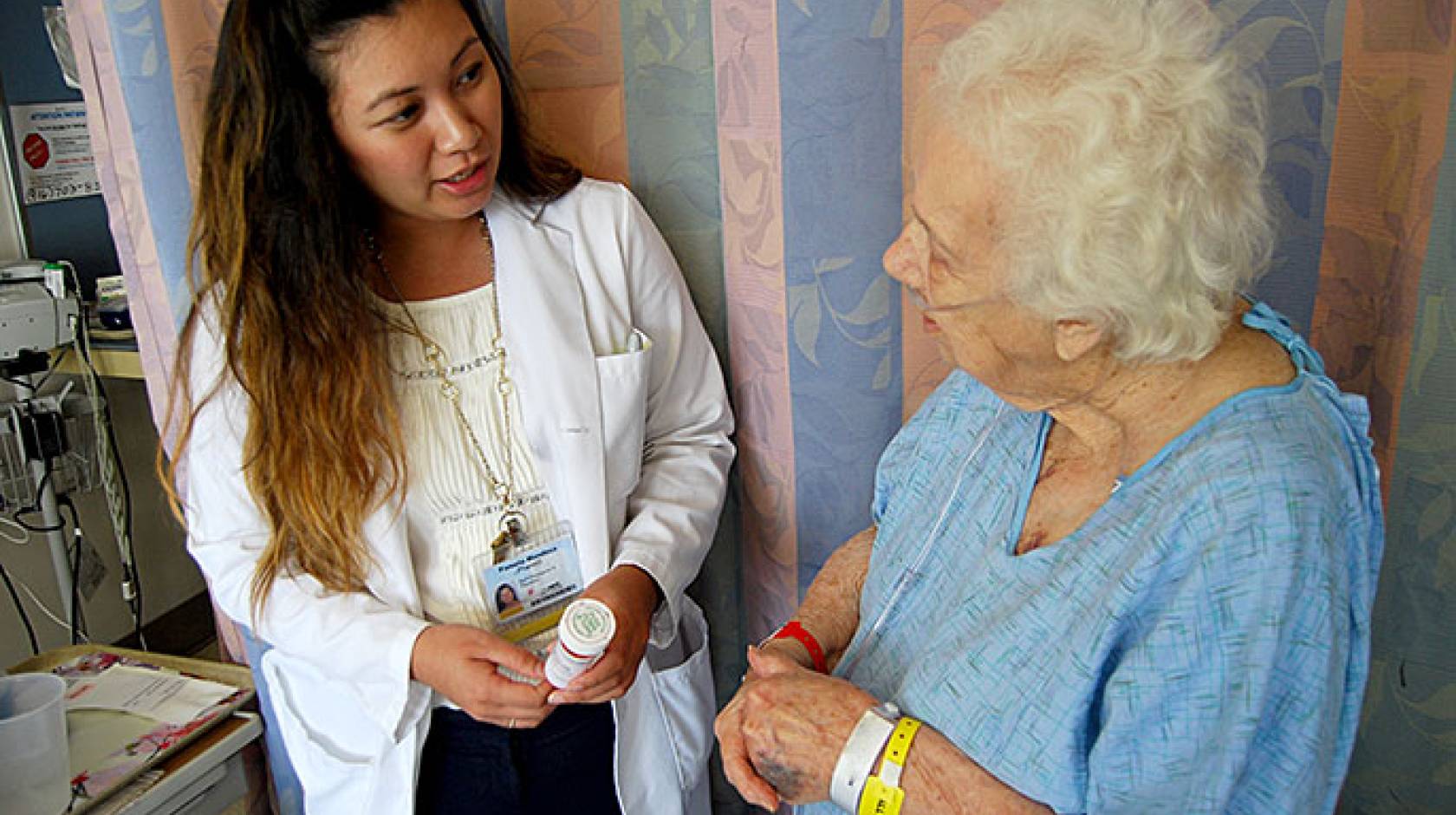Rebecca Vesely, Special to UC Newsroom

UC Davis Medical Center has enhanced its medication management to reduce medication errors and improve patient care.
UC Davis has focused on four key medication management projects: medication reconciliation for high-risk patients, a black-box warning system, smart infusion pumps and bedside barcode scanning.
The medication management projects are part of UC Davis’ Delivery System Reform Improvement Program efforts. DSRIP is a novel, pay-for-performance initiative in which California’s 21 designated public hospitals receive Medicaid dollars in exchange for meeting pre-set milestones.
Expanding role of pharmacists
In the medication reconciliation project, UC Davis has expanded the role of pharmacists to help improve medication management for high-risk patients, including those with congestive heart failure.
The project ensures that patients are taking the correct medication, particularly as their clinical needs change across the care continuum, from hospital to home or other care facility. Pharmacists, for example, closely review prior and new medications with patients and their families — especially those at high risk of readmission — to make sure all prescriptions are in order and up-to-date before a patient leaves the hospital. Pharmacists also make follow-up calls to patients, focusing on reducing complications from medication errors due to prescription changes that often occur during transitions in care and recovery.
“Having pharmacists play a more active role with the rest of the patient care team clearly enhances quality and safety,” said John Grubbs, chief of pharmacy services at the medical center. “It’s not just an individual clinician taking care of patients, it’s an entire clinical team, including pharmacists, that ensures the best outcomes for patients.”
Tapping into technology
In another medication management DSRIP program, UC Davis embedded a black-box warning system into its electronic medical record system to ensure drugs that carry a high risk for life-threatening or serious adverse events are used safely. The alert includes flags, order instructions, dispensing and administration instructions, and prescribing requirements. A significant number of routine drugs dispensed in hospitals carry black-box warnings required by the U.S. Food and Drug Administration, including fentanyl patches (for managing chronic pain), haloperidol (for treating acute psychosis and schizophrenia) and methadone (also for chronic pain).

John Grubbs, chief of pharmacy services: “Having pharmacists play a more active role with the rest of the patient care team clearly enhances quality and safety.”
Credit: Charles Casey/UC Davis
DSRIP support also allowed for the final implementation of smart infusion pumps for patient-controlled analgesia and epidural anesthesia and syringe pumps. The smart pump project ensures the safe infusion of drugs given intravenously by eliminating many opportunities for human error.
Finally, UC Davis embraced bedside barcode scanning as part of its DSRIP efforts. This was a complex technology project involving changes in clinical procedures and protocols, and requiring significant resource investment.
Bedside barcode scanning involves clinicians using a handheld computer, called a Rover, to ensure the right medication is given to the right patient at the right time. The clinician scans his or her badge with the Rover, enters a password and scans the barcode on the medication and then delivers the medication to the bedside. When the patient’s wristband is scanned, his or her medications list and prescription history pop up onscreen. The clinician pushes an “accept” button on the Rover, which records the medication, dosage and time, and then administers the medication to the patient. Bedside barcoding has been implemented throughout the medical center (except the emergency department).
“Patient safety is the hallmark of a great hospital,” Grubbs said. “Projects that focus on addressing clinical processes such as the proper delivery of medications are the keys to delivering the best care possible. Our medication management initiative is among the most important factors in being able to provide quality care and the highest levels of safety for every patient.”

